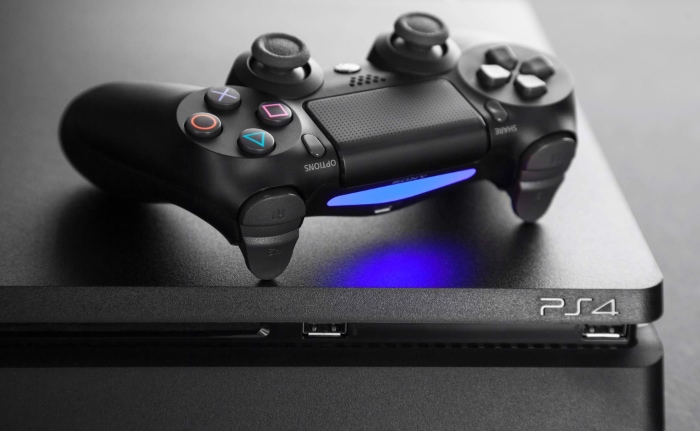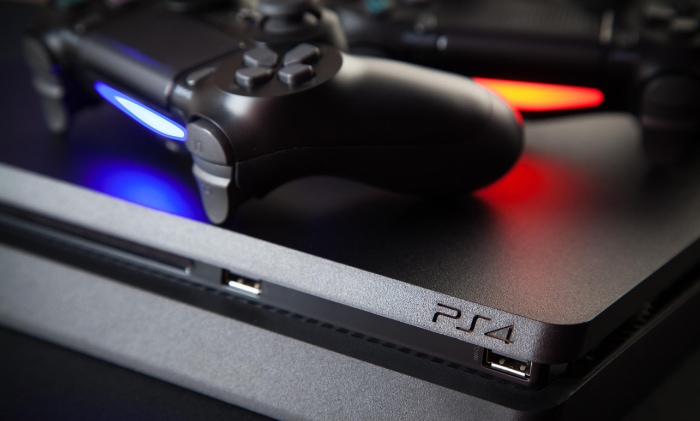PS4 Lifespan: How Many Years to Expect?

Gaming enthusiasts around the world have hailed the PS4 as a revolutionary console, given its remarkable features and immersive gameplay. Its widespread popularity raises a common question: how long does it truly last?
Knowing the expected lifespan of this device is essential for both seasoned gamers and those just beginning their digital adventures. It guides maintenance routines, future purchasing decisions, and even gameplay habits.
Factors Influencing the Lifespan of a PS4
Understanding the various elements that can impact the lifespan of a PS4 is crucial for every user. Not only does it help in ensuring optimal performance, but it also provides insights into how best to maintain and care for the console.
Here, we’ll discuss the key factors that determine how long your PS4 can potentially last.
Hardware Quality
The foundational element that determines the lifespan of any electronic device, including the PS4, is its hardware quality. Sony has generally upheld high manufacturing standards, but there are variations in the quality depending on the model.
- Build and Material Quality The PS4’s chassis, disk drive, and internal components are built to be durable. However, the quality can vary based on the specific batch or production run.
- Evolution of Hardware in Different PS4 Versions Over the years, Sony has released various iterations of the PS4, such as the Slim and Pro versions. Each of these versions has its own set of hardware improvements and modifications which can influence lifespan.
Usage Patterns
How often and how long a PS4 is used can have a significant impact on its lifespan. A console that’s used intensively every day may wear out faster than one used occasionally.
- Daily Hours of Use A PS4 that is constantly running may experience more wear and tear on its components compared to one that’s used more sparingly.
- Proper Ventilation and Placement Ensuring that the console has enough space around it for proper ventilation can prevent overheating. Overheating can drastically reduce the console’s life, so it’s crucial to place it in an open space.
Maintenance
Regular upkeep of the PS4 can play a significant role in prolonging its life. Maintenance can be both in terms of software and hardware.
- Importance of Cleaning Dust and debris can accumulate over time, affecting the PS4’s performance and cooling system. Regularly cleaning external vents and surfaces can help the console run smoother.
- Software Updates and Patches Keeping the PS4 updated with the latest software ensures that the system runs optimally and is protected against potential software-related issues.
External Factors
Even with the best care, there are external elements that can influence the PS4’s lifespan.
- Power Surges Sudden electrical spikes can cause damage to the PS4’s internal components. Using a surge protector is a preventive measure to avoid such damages.
- Accidental Drops and Physical Damage Physical trauma, like drops or heavy impacts, can harm the delicate internal components of the PS4, affecting its lifespan.
By considering these factors and implementing best practices around them, users can ensure a longer and more efficient life for their PS4 consoles.
Typical Lifespan Estimates
The longevity of a PS4, like any other electronic device, varies based on several factors. However, by analyzing user experiences and technical evaluations, we can provide some general estimates on how long different PS4 models might last.
It’s worth noting that individual experiences can differ, but these are the widely observed averages.
PS4 Original
The original PS4 model, released in 2013, set the stage for Sony’s next-generation console journey.
- Estimated Lifespan With regular use, this version can last anywhere between 4 to 7 years. The duration largely depends on factors like usage patterns, maintenance, and external conditions.
PS4 Slim
Introduced as a more compact and energy-efficient version, the PS4 Slim brought subtle improvements over the original.
- Hardware Improvements The PS4 Slim has minor upgrades, especially in terms of cooling and power consumption, which might slightly extend its lifespan.
- Estimated Lifespan On average, the PS4 Slim, when maintained well, can last between 5 to 8 years.
PS4 Pro
The PS4 Pro, a powerhouse in terms of performance, was aimed at gamers looking for enhanced graphics and smoother gameplay.
- Enhanced Hardware Capabilities With improved GPU performance, faster CPU, and additional RAM, the Pro version was designed for longevity and better gaming experiences.
- Estimated Lifespan Given its robust build and hardware capabilities, the PS4 Pro has an expected lifespan of 6 to 9 years.
These lifespan estimates serve as a guideline for users to manage their expectations and make informed decisions about future upgrades or potential maintenance needs. It’s always essential to remember that regular care and optimal usage conditions can often push a device to the upper limits of its expected lifespan.
Signs Your PS4 is Nearing the End of Its Lifespan

As time goes on, every electronic device starts to showcase signs of wear and tear, and the PS4 is no exception. Recognizing these symptoms early can prepare users for potential maintenance or even a console upgrade.
Here, we highlight some of the most common indicators that your PS4 might be approaching its final chapters.
Frequent Crashes or Freezing
One of the most evident signs is when the console begins to crash or freeze frequently. Occasional hiccups might be software-related, but consistent issues can indicate hardware degradation.
- Software Troubles Regular crashes when running a specific game or application might point to a software problem. It’s essential to differentiate between isolated incidents and recurring issues.
- Hardware Concerns If the PS4 crashes regardless of the game or application being run, the underlying issue might be hardware-related.
Overheating Despite Proper Ventilation
A PS4 that consistently overheats, even in well-ventilated spaces, might be signaling deeper internal issues.
- Ventilation Checks Ensure that the console isn’t placed in a cramped space. Proper ventilation can help mitigate overheating, but if the issue persists, it might be indicative of a failing cooling system.
Unusual Sounds from the Internal Fan or Disk Drive
Distinctive noises, especially grinding or loud whirring, can be a sign of internal components wearing out.
- Fan Noises The fan might make louder noises as it ages, but abrupt, grinding sounds could indicate it’s on its way out.
- Disk Drive Sounds If you hear unfamiliar sounds when a disk is inserted or while it’s running, the drive might be deteriorating.
Slower Performance and Load Times
While advancements in games can demand more from consoles, a noticeable and consistent drop in performance might suggest aging hardware.
- Load Times If games or applications take considerably longer to load than they used to, it could be due to a weakening hard drive or other internal components.
- Game Performance Should games stutter, lag, or drop frames more frequently, the PS4 might be struggling to keep up due to wear on its components.
Recognizing these signs early gives users a head start in assessing whether to invest in repairs or start considering an upgrade. Either way, it’s all part of the journey of enjoying the dynamic world of gaming.
When is it Time to Upgrade?
Every gaming console has its prime, and eventually, the allure of newer, more powerful models becomes hard to resist. The decision to upgrade from a PS4 to a newer console, like the PS5 or any other advanced platform, often involves weighing multiple factors.
This segment offers insights into recognizing the right moment to make that switch.
Comparing the Costs of Repair vs. New Console Purchase
One of the primary considerations is the economic factor. If your PS4 begins to show signs of wear and requires frequent repairs, it might be more cost-effective in the long run to invest in a new console.
- Frequency of Repairs Occasional fixes are standard, but if you find yourself frequently visiting repair shops, those bills can quickly add up.
- Availability of Parts As the PS4 ages, certain parts might become scarce or more expensive. This can make repairs less viable.
Advancements in the Gaming Industry
With the rapid evolution of the gaming industry, staying updated can enhance your gaming experience.
- Exclusive Game Releases Newer consoles often come with exclusive game titles that aren’t available for older models. If you’re eager to play the latest releases, it might be time to upgrade.
- Enhanced Gaming Experience New consoles typically offer improved graphics, faster load times, and smoother gameplay, enhancing the overall experience.
Considering Backward Compatibility and Game Libraries
An essential factor for many gamers is the collection of games they’ve amassed over the years. Thankfully, modern consoles often address this concern.
- Transferring Game Libraries Many new consoles, like the PS5, allow users to transfer and play games purchased on previous models. This feature can make the transition smoother and more appealing.
- Backward Compatibility Some consoles enable players to enjoy older games with improved performance and visuals. If this feature is essential to you, it can influence your decision to upgrade.
Personal Gaming Needs and Preferences
Beyond the technical and financial aspects, personal preferences play a crucial role.
- Desire for the Latest Tech If you’re someone who loves staying on the cutting edge of technology and enjoys the benefits that come with it, upgrading might be a natural choice.
- Social Gaming Considerations If your friends or gaming community shift to newer platforms, you might want to join them to continue enjoying multiplayer sessions.
Upgrading a console is both an investment and a step into the future of gaming. By weighing the above factors, gamers can make an informed choice that aligns with their needs, budget, and gaming aspirations.
Conclusion
Evaluating the lifespan of the PS4 is more than just assessing its hardware durability. From identifying signs of wear to gauging the optimal time for an upgrade, the journey encompasses a mix of technical, economic, and personal considerations.
Every PS4, be it the original, Slim, or Pro, offers a unique experience, and recognizing when it’s nearing its end is essential for uninterrupted gaming. Ultimately, whether maintaining a beloved PS4 or transitioning to a newer model, what matters most is the joy and satisfaction derived from the world of gaming.


